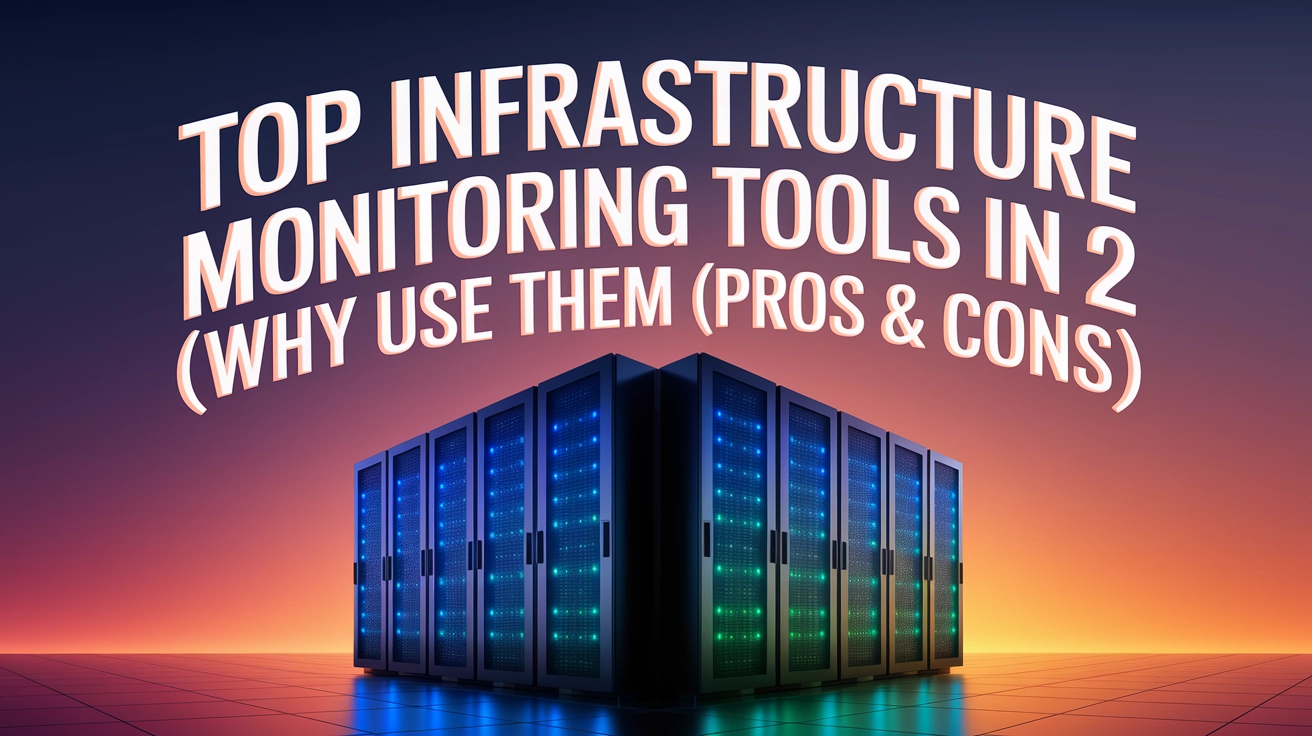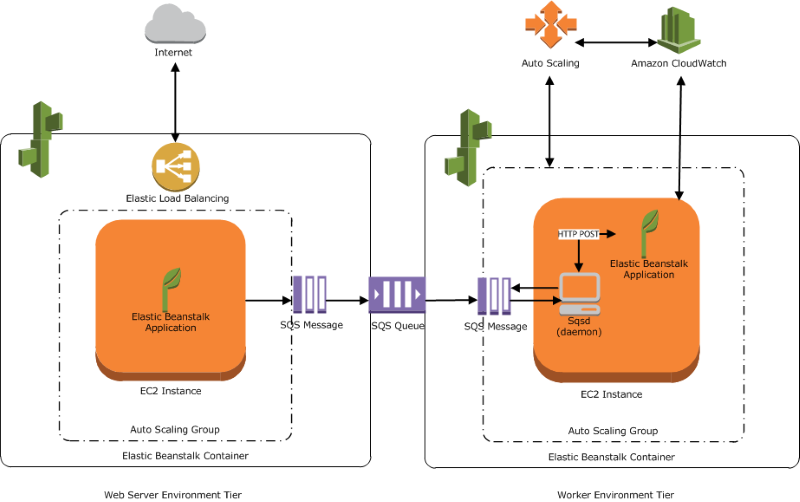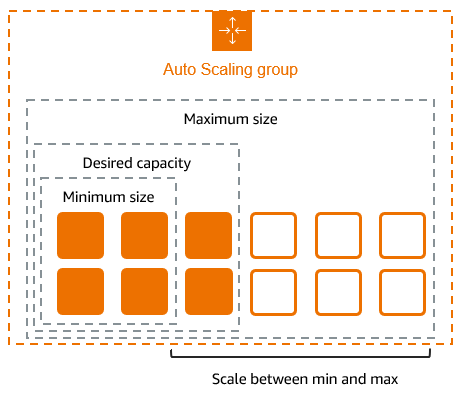Introduction
In today's fast-paced digital environment, infrastructure monitoring has become more critical than ever. With the complexity of modern IT ecosystems growing exponentially, organizations need robust monitoring solutions to ensure optimal performance, rapid troubleshooting, and proactive management of their infrastructure. As we navigate through 2025, the landscape of infrastructure monitoring tools continues to evolve, offering more sophisticated features and capabilities.
Why Infrastructure Monitoring Matters
Before diving into the specific tools, let's understand why infrastructure monitoring is essential:
- Proactive Issue Detection: Identify and resolve problems before they impact users
- Performance Optimization: Fine-tune your systems for maximum efficiency
- Cost Management: Monitor resource usage to optimize spending
- Downtime Prevention: Minimize service disruptions that could cost thousands per minute
- Security Enhancement: Detect unusual patterns that might indicate security breaches
- Compliance Requirements: Meet regulatory standards with comprehensive monitoring

Top Infrastructure Monitoring Tools in 2025
1. Datadog
Overview: Datadog has established itself as a comprehensive monitoring platform that covers infrastructure, applications, and services with impressive visualization capabilities.
Pros:
- Unified monitoring dashboard that brings together metrics, traces, and logs
- Extensive integration ecosystem with over 500+ integrations
- Powerful real-time visualization and reporting
- AI-powered alerting with anomaly detection
- User-friendly interface with customizable dashboards
Cons:
- Pricing can get expensive quickly as you scale
- Can be overwhelming for small teams or beginners
- Some users report that the learning curve is steeper than advertised
Best for: Mid to large enterprises with diverse technology stacks who need comprehensive monitoring capabilities.
2. Dynatrace
Overview: Dynatrace leverages AI to provide automatic discovery, monitoring, and root-cause analysis for complex IT environments.
Pros:
- Davis AI engine provides automated root-cause analysis
- Automatic discovery and mapping of your entire application stack
- Exceptional performance monitoring with detailed insights
- Real-time monitoring with minimal performance impact
- End-to-end transaction tracing across complex environments
Cons:
- Premium pricing model puts it out of reach for smaller organizations
- Steep learning curve for initial setup and configuration
- Can be complex to customize for specific use cases
Best for: Enterprise-level organizations with complex infrastructure who need advanced AI-driven insights and are willing to invest in a premium solution.
3. Prometheus
Overview: This open-source monitoring system has become the de facto standard for Kubernetes monitoring and is widely adopted in cloud-native environments.
Pros:
- Completely free and open-source
- Highly scalable time-series database
- Pull-based architecture makes it more reliable in dynamic environments
- Native integration with Kubernetes
- Strong community support and ecosystem
Cons:
- Limited built-in visualization (typically paired with Grafana)
- Complex configuration for beginners
- Requires more manual setup compared to commercial solutions
- Long-term storage can be challenging
Best for: Organizations with Kubernetes environments, DevOps teams who prefer open-source solutions, and companies looking for cost-effective but powerful monitoring.
4. New Relic
Overview: New Relic has evolved from application performance monitoring to provide full-stack observability with a consumption-based pricing model.
Pros:
- Intuitive user interface with easy-to-understand dashboards
- Strong application performance monitoring capabilities
- Full-stack observability in a single platform
- Telemetry Data Platform allows centralization of all monitoring data
- Consumption-based pricing offers flexibility
Cons:
- Cost can escalate quickly with data ingestion-based pricing
- Not as strong in infrastructure monitoring as some competitors
- Some users report issues with the depth of database monitoring
Best for: Development teams focused on application performance who want quick setup and intuitive dashboards.

5. Site24x7
Overview: Site24x7 offers comprehensive monitoring for websites, applications, servers, and networks with an emphasis on ease of use.
Pros:
- More affordable pricing compared to enterprise solutions
- User-friendly interface that's accessible to non-technical users
- Global monitoring network for website uptime checks
- Integrated APM capabilities
- Strong mobile app for on-the-go monitoring
Cons:
- Less powerful for complex enterprise environments
- Limited advanced analytics compared to Dynatrace or Datadog
- Fewer integrations than some competitors
Best for: Small to mid-sized businesses looking for affordable, comprehensive monitoring with minimal setup complexity.
6. Better Stack
Overview: A relative newcomer gaining traction, Better Stack provides full-stack monitoring with a focus on incident management and log analysis.
Pros:
- Modern, clean interface that's easy to navigate
- Integrated incident management with collaborative tools
- Comprehensive logging capabilities
- Reasonable pricing model with a free tier
- Excellent Slack and MS Teams integrations
Cons:
- Smaller ecosystem of integrations than established players
- Less mature product with fewer advanced features
- Limited community resources compared to older platforms
Best for: Startups and growing companies that want an all-in-one solution with strong incident management capabilities.
7. Elastic Stack (ELK)
Overview: The combination of Elasticsearch, Logstash, and Kibana forms a powerful open-source monitoring solution focused on log analysis and visualization.
Pros:
- Exceptional log aggregation and search capabilities
- Highly customizable dashboards with Kibana
- Scales horizontally for massive data volumes
- Open-source with commercial support options
- Extensive community and documentation
Cons:
- Requires significant expertise to set up and maintain
- Resource-intensive, especially for large deployments
- Not a turnkey solution – requires integration work
- Learning curve for effective query building
Best for: Organizations with large volumes of log data, teams with existing Elastic expertise, and companies looking for powerful search capabilities.
8. AppDynamics (Cisco)
Overview: AppDynamics provides application and business performance monitoring with a focus on business impact analysis.
Pros:
- Connects technical performance to business outcomes
- Deep code-level visibility for troubleshooting
- Advanced analytics with machine learning
- Comprehensive application mapping
- Strong database monitoring capabilities
Cons:
- Enterprise-level pricing that's expensive for smaller organizations
- Complex implementation requiring specialized knowledge
- Heavyweight agent can impact performance on some systems
Best for: Large enterprises focusing on business transaction monitoring and companies that need to tie IT performance directly to business metrics.
9. Sematext
Overview: Sematext combines infrastructure monitoring, log management, and APM in a unified platform with flexible deployment options.
Pros:
- More affordable than many enterprise solutions
- Comprehensive monitoring across logs, metrics, and traces
- Both cloud and on-premises deployment options
- Strong container and Kubernetes monitoring
- Simpler setup compared to some open-source alternatives
Cons:
- Smaller market share means fewer integrations
- UI is less polished than some competitors
- Documentation can be lacking for advanced use cases
Best for: Organizations looking for a balance between cost and capabilities, particularly those with containerized environments.
10. PagerDuty
Overview: While primarily focused on incident management, PagerDuty has evolved to include monitoring capabilities with a strong emphasis on alerting and response.
Pros:
- Best-in-class incident management and alerting
- Sophisticated on-call scheduling and escalation policies
- Extensive integration with virtually all monitoring tools
- Automation for common incident response activities
- Strong mobile experience for on-the-go responders
Cons:
- Not a comprehensive monitoring solution on its own
- Can be expensive when scaled across large teams
- Primarily focused on alerting rather than root cause analysis
Best for: Teams looking to enhance their incident response capabilities and organizations that already have monitoring tools but need better alerting.

How to Choose the Right Monitoring Tool
Selecting the appropriate infrastructure monitoring tool depends on several factors:
-
Environment Complexity: Larger, more complex environments typically require more sophisticated tools like Dynatrace or Datadog.
-
Budget Constraints: Open-source solutions like Prometheus offer powerful capabilities for teams with limited budgets.
-
Technical Expertise: Consider your team's expertise—some tools require significant knowledge to implement effectively.
-
Specific Needs:
- For Kubernetes-centric environments, Prometheus is often ideal
- For application-focused monitoring, New Relic excels
- For log analysis, the Elastic Stack is hard to beat
-
Integration Requirements: Ensure the tool integrates with your existing technology stack.
-
Scalability: Consider how the tool (and its cost) will scale as your infrastructure grows.
The Future of Infrastructure Monitoring
As we look beyond 2025, several trends are shaping the future of infrastructure monitoring:
- AI-Driven Observability: More sophisticated anomaly detection and predictive analytics
- Increased Automation: Self-healing systems that automatically respond to detected issues
- Unified Observability: Further breakdown of silos between metrics, logs, and traces
- Security Integration: Tighter coupling between monitoring and security tools
- Sustainability Monitoring: Tools that help track and reduce the carbon footprint of IT operations
Conclusion
The right infrastructure monitoring tool can mean the difference between proactive management and costly reactive firefighting. In 2025, organizations have a wealth of options ranging from comprehensive commercial platforms to powerful open-source solutions.
For enterprises with complex environments and bigger budgets, tools like Datadog, Dynatrace, and AppDynamics offer comprehensive capabilities with advanced AI features. For organizations prioritizing cost-effectiveness and customization, Prometheus combined with Grafana remains a powerful choice. Newer entrants like Better Stack are bridging the gap with user-friendly interfaces and reasonable pricing.
Ultimately, the best choice depends on your specific needs, technical capabilities, and budget constraints. Many organizations end up using multiple tools for different aspects of their monitoring strategy—there's no one-size-fits-all solution in this rapidly evolving space.
At DevOps Horizon, we recommend starting with a clear assessment of your monitoring requirements before evaluating tools. Understanding what you need to monitor, why you're monitoring it, and how you'll respond to issues is the foundation of an effective monitoring strategy.
What infrastructure monitoring tools is your organization using in 2025? Are there emerging solutions we should be watching? Let us know in the comments!




